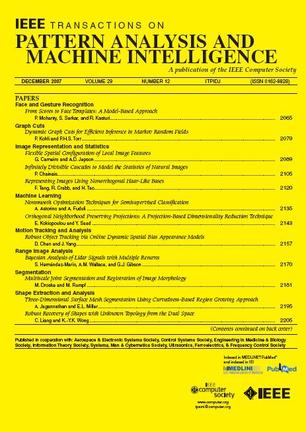提供基于特征映射的代理和操作评分功能,加速零快照NAS。
IF 20.8
1区 计算机科学
Q1 COMPUTER SCIENCE, ARTIFICIAL INTELLIGENCE
IEEE Transactions on Pattern Analysis and Machine Intelligence
Pub Date : 2025-07-18
DOI:10.1109/tpami.2025.3590342
引用次数: 0
摘要
神经结构搜索(NAS)因其在自动化结构工程中的应用而受到广泛的研究。现有的NAS方法严重依赖于梯度和数据标签,这些方法要么产生巨大的计算成本,要么由于超网络结构而存在离散化差异。此外,它们中的大多数在生成不同的体系结构方面受到限制。为了缓解这些问题,在本文中,我们提出了一种新的零成本代理,称为$\mathsf {MeCo}$,基于特征映射的Pearson相关矩阵。与之前的工作不同,$\mathsf {MeCo}$及其变体$\mathsf {MeCo_{opt}}$的计算只需要单个前向传递的一个随机数据。在提出的零成本代理的基础上,我们进一步设计了一个新的零射击NAS方案,称为$\mathsf {FLASH}$,它利用了一个新的基于代理的操作评分函数和贪婪启发式。与现有方法相比,$\mathsf {FLASH}$具有很高的效率,可以构建多种模型架构,而不是重复的单元。我们设计了全面的实验,并在多个基准和数据集上广泛评估我们的设计。实验结果表明,该方法的效率比目前最先进的基线方法高一到六个数量级,具有最高的模型精度。本文章由计算机程序翻译,如有差异,请以英文原文为准。
Accelerating Zero-Shot NAS With Feature Map-Based Proxy and Operation Scoring Function.
Neural Architecture Search (NAS) has been extensively studied due to its ability in automatic architecture engineering. Existing NAS methods rely heavily on the gradients and data labels, which either incur immense computational costs or suffer from discretization discrepancy due to the supernet structure. Moreover, the majority of them are limited in generating diverse architectures. To alleviate these issues, in this paper, we propose a novel zero-cost proxy called $\mathsf {MeCo}$ based on the Pearson correlation matrix of the feature maps. Unlike the previous work, the computation of $\mathsf {MeCo}$ as well as its variant $\mathsf {MeCo_{opt}}$ requires only one random data for a single forward pass. Based on the proposed zero-cost proxy, we further craft a new zero-shot NAS scheme called $\mathsf {FLASH}$, which harnesses a new proxy-based operation scoring function and a greedy heuristic. Compared to the existing methods, $\mathsf {FLASH}$ is highly efficient and can construct diverse model architectures instead of repeated cells. We design comprehensive experiments and extensively evaluate our designs on multiple benchmarks and datasets. The experimental results show that our method is one to six orders of magnitudes more efficient than the state-of-the-art baselines with the highest model accuracy.
求助全文
通过发布文献求助,成功后即可免费获取论文全文。
去求助
来源期刊
CiteScore
28.40
自引率
3.00%
发文量
885
审稿时长
8.5 months
期刊介绍:
The IEEE Transactions on Pattern Analysis and Machine Intelligence publishes articles on all traditional areas of computer vision and image understanding, all traditional areas of pattern analysis and recognition, and selected areas of machine intelligence, with a particular emphasis on machine learning for pattern analysis. Areas such as techniques for visual search, document and handwriting analysis, medical image analysis, video and image sequence analysis, content-based retrieval of image and video, face and gesture recognition and relevant specialized hardware and/or software architectures are also covered.

 求助内容:
求助内容: 应助结果提醒方式:
应助结果提醒方式:


